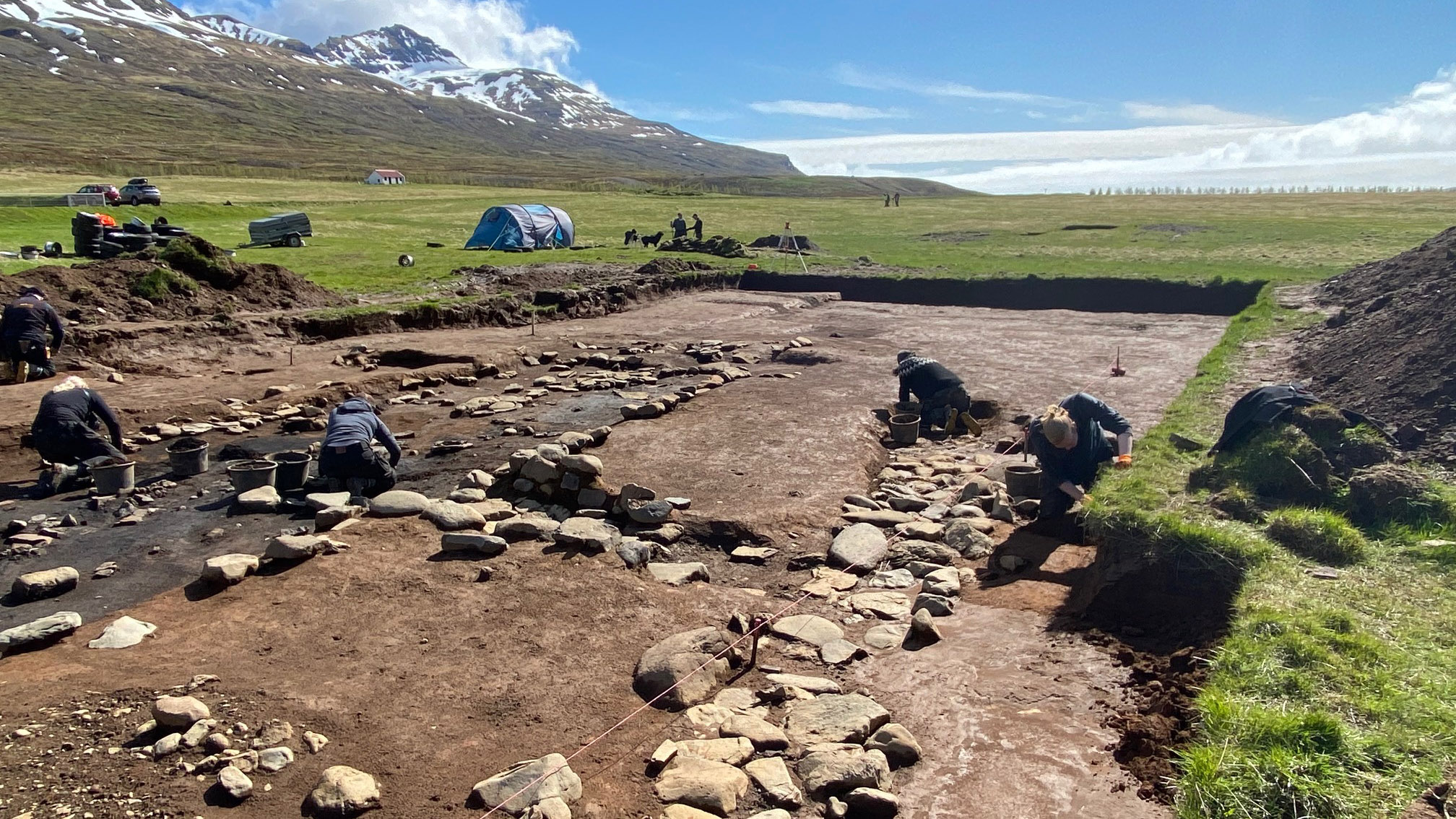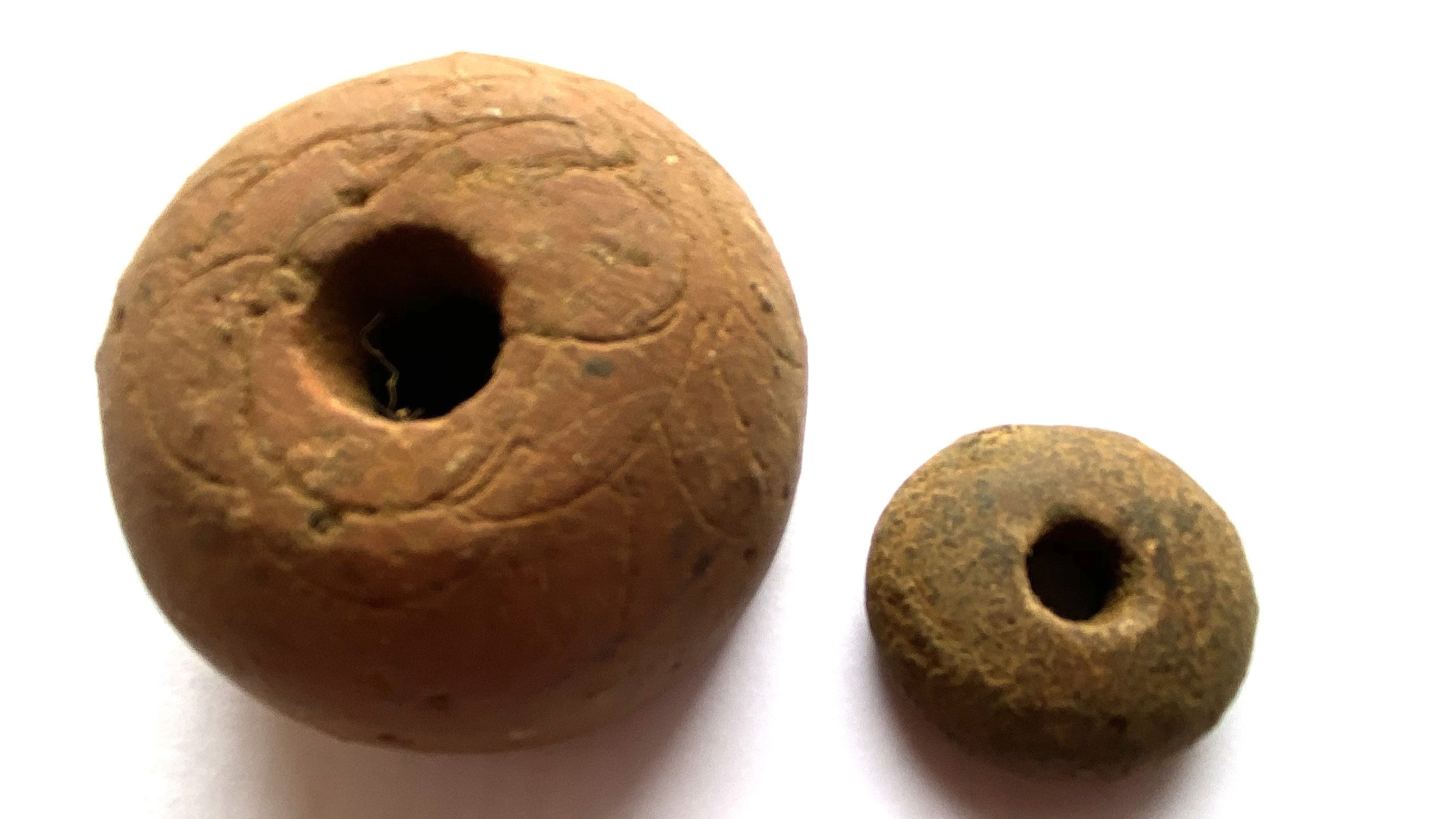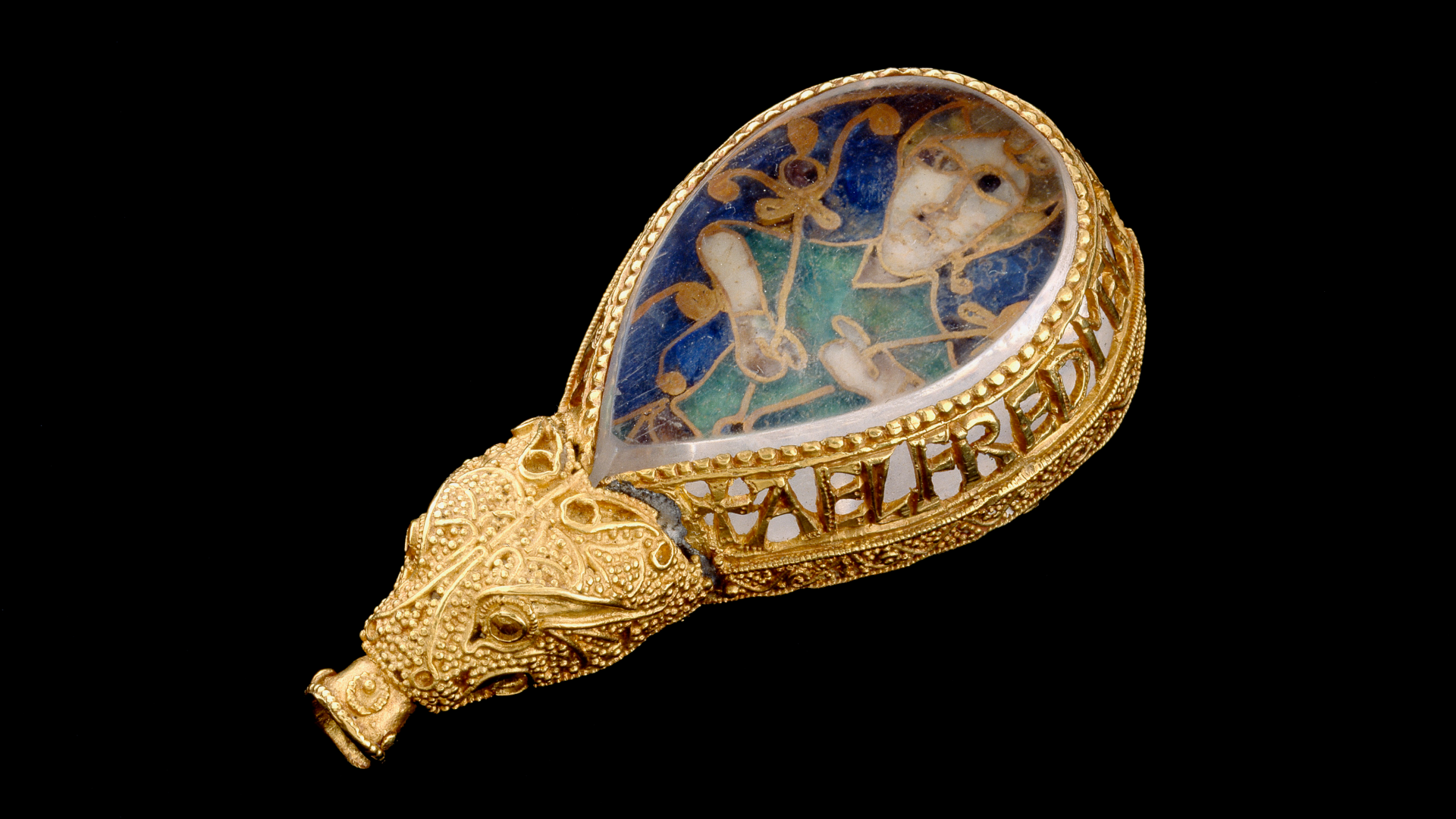Oldest Viking settlement possibly unearthed in Iceland
It dates back decades before Vikings are supposed to have settled the island.

Archaeologists have unearthed what may be the oldest Viking settlement in Iceland.
The ancient longhouse is thought to be a summer settlement built in the 800s, decades before seafaring refugees are supposed to have settled the island, and was hidden beneath a younger longhouse brimming with treasures, said archaeologist Bjarni Einarsson, who led the excavations.
"The younger hall is the richest in Iceland so far," Einarsson told Live Science. "It is hard not to conclude that it is a chieftain's house."
Related: Photos: Viking outposts possibly found in Canada
Communal houses

Longhouses were large wooden halls, up to 250 feet (75 meters) long and 20 feet (6 meters) wide, covered with turf and thatch and used as communal habitations throughout the Norse lands during the Viking Age.
They were divided into rooms and could be shared by several families. Fires were built in stone hearths along the center, and farm animals could be stabled there to protect them from cold.
Both longhouses were found at Stöð, near the village and fjord of Stöðvarfjörður in the east of Iceland. The younger structure dates to around A.D. 874 — the commonly accepted date for Iceland's settlement by people, who, according to Icelandic lore, were escaping the Norwegian king Harald Fairhair. It contains one of the most valuable hoards of ornamental beads, silver and ancient coins ever found in Scandinavia, Einarsson said.
Get the world’s most fascinating discoveries delivered straight to your inbox.
Related: Fierce fighters: 7 secrets of Viking seamen
Among the finds: Roman and Middle Eastern silver coins, and "hacksilver," which are cut and bent pieces of silver used as bullion or currency by the Vikings and other ancient peoples.
The excavations of the 130 foot-long (40 m) hall have also unearthed decorative glass beads, rings, weights and a tiny fragment of gold, Einarsson said. The inhabitants likely acquired these goods by trading local resources, such as the skins and meat from whales and seals, which were prized throughout Viking Scandinavia.

Atlantic expansion
Hidden beneath the treasure-filled longhouse was an even older structure. Chemical and other analysis suggest this buried longhouse was built in the 800s, long before the permanent settlement of Iceland, Einarsson said.
He thinks it was a seasonal settlement or camp, occupied only during the summer and maybe into the fall, by workers in the area.
Although walruses were not found in eastern Iceland, the local resources that could be eaten, preserved or traded could have included produce from fish, whales, seals and birds, he said.

Parts of the older building investigated so far show it was one of the largest longhouses ever found in Iceland.
"We know that the westernmost part of the older hall was a smithy [for working with metal] — the only smithy within a hall known in Iceland," Einarsson said.
The seasonal camp at Stöð was similar in scale and function to the Viking settlement discovered at L'Anse aux Meadows, in what is now Newfoundland in Canada, which has been dated to around A.D. 1000, he said.
"This was a pattern of the settlement of the islands in the Atlantic Ocean," Einarsson said. "First, we had the seasonal camps, and then the settlement followed."
Einarsson has directed a private archaeological firm for more than 20 years, and from 2009 excavated a Viking Age settlement at Vogur, on Iceland's west coast, which depended on hunting walruses for their ivory, skins and meat.
He discovered the longhouse ruins at Stöð in 2007 and began excavations at the site in 2015. The project is paid for by Iceland's Archaeological Fund, the region's municipal government, companies and local people.
- Photos: Viking warrior is actually a woman
- The 25 most mysterious archaeological finds on Earth
- 30 of the world's most valuable treasures that are still missing
Originally published on Live Science.
OFFER: Save 45% on 'How It Works' 'All About Space' and 'All About History'!
For a limited time, you can take out a digital subscription to any of our best-selling science magazines for just $2.38 per month, or 45% off the standard price for the first three months.
Tom Metcalfe is a freelance journalist and regular Live Science contributor who is based in London in the United Kingdom. Tom writes mainly about science, space, archaeology, the Earth and the oceans. He has also written for the BBC, NBC News, National Geographic, Scientific American, Air & Space, and many others.



